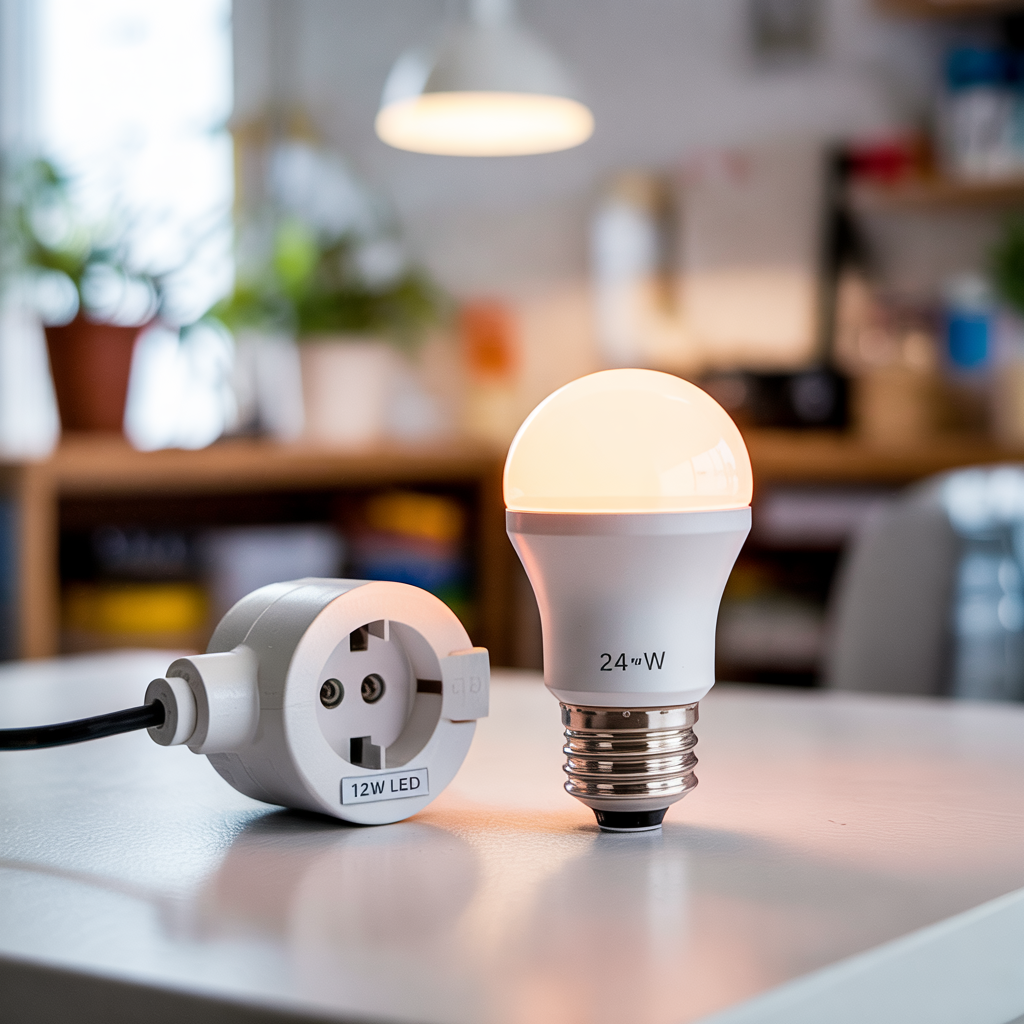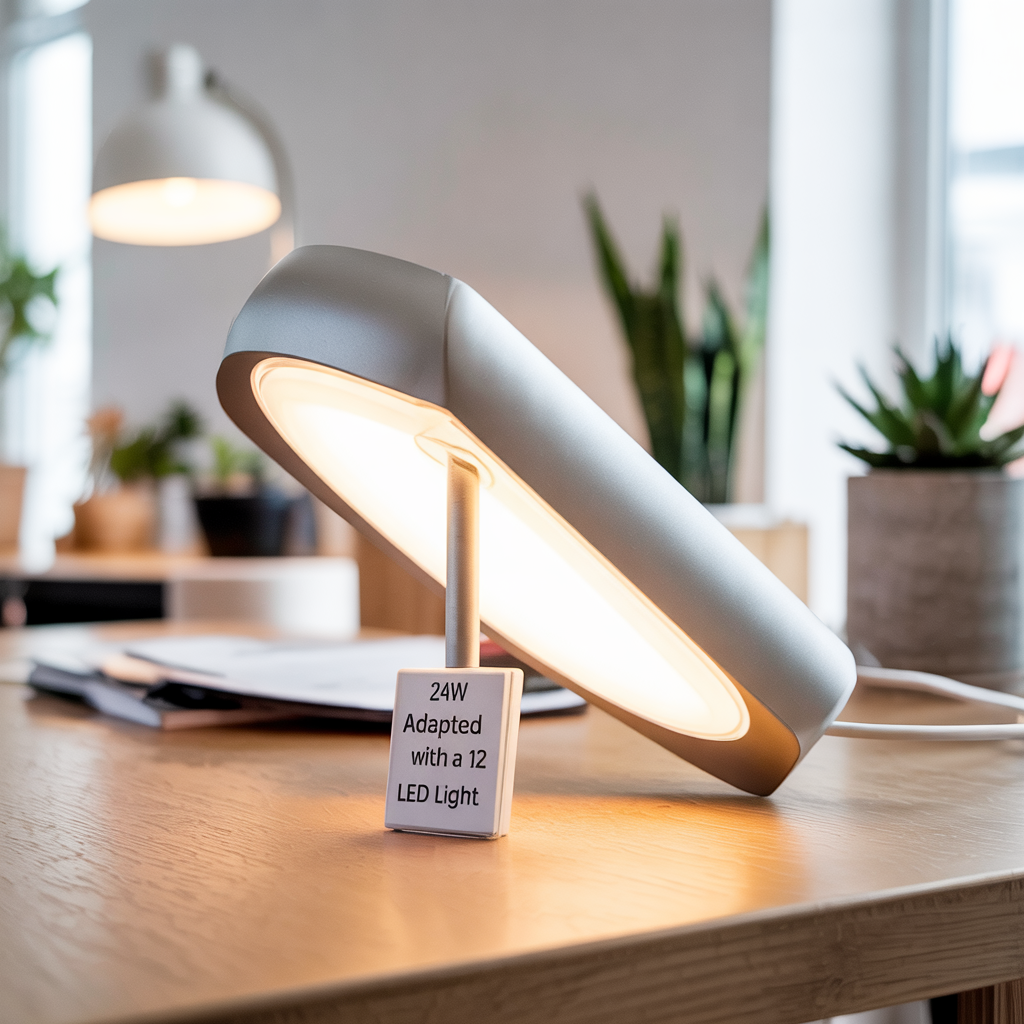Can I Use a 24W Adapted with a 12W LED Light? A Complete Guide
Switching to LED lighting can be a great way to save energy and money, but sometimes compatibility issues arise. This guide will thoroughly explore the question: Can I use a 24W adapted with a 12W LED light? We’ll examine the technical aspects, safety concerns, and ultimately, help you determine if this is a suitable approach…
Switching to LED lighting can be a great way to save energy and money, but sometimes compatibility issues arise. This guide will thoroughly explore the question: Can I use a 24W adapted with a 12W LED light? We’ll examine the technical aspects, safety concerns, and ultimately, help you determine if this is a suitable approach for your lighting needs. We’ll cover everything from wattage and lumens to potential drawbacks and installation considerations.
No, using a 24W adapter with a 12W LED light can damage the LED or reduce its lifespan. Always match the adapter’s voltage and current output to the LED’s requirements for safe and efficient operation.
Wattage (W) indicates the amount of electrical power a light bulb consumes. A 24W fixture is designed to handle a maximum power input of 24 watts. This doesn’t directly translate to brightness.
Lumens (lm) measure the brightness of a light source. A 24W incandescent bulb might produce a significantly different number of lumens
than a 12W LED bulb, even though the wattage is different. LEDs are far more efficient, producing more light per watt.
Can I Use a 24W Adapted with a 12W LED Light?
Using a 24W adapter with a 12W LED light might work, but only if the voltage and current match the LED’s requirements. Mismatched power can reduce lifespan or cause failure. Always check compatibility between the adapter and the LED light before connecting.
The Compatibility Question: Can a 12W LED Fit a 24W Fixture?

Physical Compatibility: Socket Size and Shape
The most straightforward aspect of compatibility is the physical fit. If the 12W LED bulb’s base (e.g., E26, E27, GU10) matches the fixture’s socket, then it will physically fit.
Read More: How to Replace Fluorescent Light with LED? A Step By Step Guide
Electrical Compatibility: Wattage and Voltage
| Aspect | What It Means | Why It Matters |
|---|---|---|
| Wattage (W) | Power consumption of the LED light | Using higher wattage than needed wastes energy; too low may not power the light |
| Voltage (V) | Electrical potential required to operate the LED | Must match the power supply to avoid malfunction or damage |
| Current (A) | Flow of electricity (related to voltage and wattage) | Incorrect current can overheat or underpower the LED |
| Power Supply Match | Compatibility of LED light with adapter or driver | Ensures efficient, safe operation |
| Overpowering Risk | Adapter wattage higher than LED requirement | May work if voltage matches, but still requires caution |
| Underpowering Risk | Adapter wattage lower than LED requirement | LED may flicker, underperform, or fail |
This is the crucial point. While a 12W LED bulb consumes less power than a 24W incandescent, the fixture is rated for a maximum of 24W. Since the LED uses only 12W, it will not overload the fixture. However, always check the bulb’s voltage rating matches your home’s voltage (usually 120V in North America, 230V in Europe).
Benefits of Using a Lower Wattage LED in a Higher Wattage Fixture

Energy Savings: Reduced Electricity Consumption
This is the primary advantage. A 12W LED bulb will consume significantly less energy than a 24W incandescent bulb, resulting in lower electricity bills and a smaller carbon footprint.
Extended Bulb Lifespan: Longer-lasting Illumination
LEDs are known for their extended lifespan compared to incandescent or even CFL bulbs. A 12W LED will last considerably longer than a 24W incandescent, reducing replacement costs.
Heat Reduction: Lower Temperatures for Safety
LEDs produce much less heat than traditional incandescent bulbs. This can be beneficial in enclosed fixtures, reducing the risk of overheating.
Limitations and Potential Drawbacks
Lower Light Output: Less Brightness Than a 24W Incandescent
While a 12W LED might offer adequate brightness, it won’t be as bright as a 24W incandescent bulb. You need to consider the lumens (lm) rating of the LED to ensure sufficient illumination.
Dimming Compatibility: Not All Dimmers Work with LEDs
If you plan on dimming the LED, ensure it’s compatible with your dimmer switch. Some dimmer switches are not designed for LEDs, resulting in flickering or malfunction.
Read More: How to Install LED Recessed Lighting In Existing Ceiling? A Comprehensive Guide
Comparing Incandescent, CFL, and LED Bulbs
Incandescent Bulbs: The Traditional Choice
These bulbs are inefficient and produce significant heat. They are gradually being phased out due to their low energy efficiency.
CFL Bulbs: Compact Fluorescent Lamps
CFLs are more energy-efficient than incandescents, but they contain mercury and can be less durable.
LED Bulbs: The Energy-Efficient Future
LEDs are the most energy-efficient option and have a significantly longer lifespan than incandescent and CFL bulbs.
Read More: 15 Front Porch Ceiling Lighting Ideas: Brighten Up Your Welcome
How to Choose the Right LED Replacement for a 24W Fixture
Assess Your Lighting Needs: Lumens are Key
Instead of focusing solely on wattage, compare the lumens (lm) of the 12W LED bulb to the lumens of the original 24W bulb you wish to replace. Ensure the LED provides enough light for your space.
Consider Color Temperature: Warm White, Cool White, Daylight
LEDs come in different color temperatures, measured in Kelvin (K). Warm white (2700-3000K) is often preferred for living spaces, while cool white (5000-6500K) is suitable for task lighting.
Check Dimming Compatibility: Ensure Seamless Control
If your existing setup incorporates a dimmer switch, confirm that the 12W LED bulb is specifically designed for dimming compatibility.
Safety Precautions When Installing LED Bulbs
Always Turn Off the Power: Prevent Electrical Shock
Before installing any new light bulb, always turn off the power at the breaker box to avoid electrical shock.
Handle Bulbs Carefully: Avoid Damage to the Bulb
LEDs are more delicate than incandescent bulbs, so handle them gently to prevent breakage.
Check the Socket Type: Ensure Correct Base
Before purchasing, double-check that the LED bulb’s base type matches your fixture’s socket type.
Troubleshooting Potential Problems
Flickering Light: Incorrect Dimmer or Bulb Compatibility
Flickering might indicate incompatibility between the LED bulb and your dimmer switch. Try a different dimmer switch or a bulb specifically designed for dimming.
Bulb Doesn’t Turn On: Check Wiring and Power Supply
Ensure the power is switched on at the breaker box and that the wiring in the fixture is correct.
Installation Guide: Step-by-Step Process
Step 1: Turn Off the Power
Always disconnect the power before working with electrical components.
Step 2: Remove the Old Bulb
Carefully remove the old 24W bulb from the fixture.
Step 3: Insert the New LED Bulb
Gently insert the 12W LED bulb into the socket, making sure it’s securely seated.
Step 4: Turn On the Power and Test
Switch the power back on and test the new LED bulb.
Calculating Energy Savings: Comparing Energy Costs
Energy Consumption Comparison: LED vs. Incandescent
Calculate the annual energy savings by comparing the wattage of the old incandescent bulb with the new LED bulb and multiplying by your electricity rate.
Return on Investment: Analyzing the Cost Savings Over Time
Determine how long it will take for the energy savings from the LED bulb to offset the initial cost of purchasing the bulb.
Frequently Asked Questions
What is the risk of using a 12W LED in a 24W fixture?
The primary risk is minimal. Since the 12W LED consumes far less power than the fixture’s 24W rating, there’s little chance of overheating or overloading. However, always ensure correct voltage compatibility.
Will a 12W LED be too dim in a 24W fixture?
It depends entirely on the lumens (lm) output of the 12W LED. Check the lumens rating and compare it to the lumens produced by the original 24W bulb. Lower lumens mean less brightness.
Can I use any 12W LED in a 24W fixture?
While it’s safe wattage-wise, ensure the LED’s voltage matches your home’s voltage and that the base type fits the fixture’s socket. Also, consider dimming compatibility if needed.
Are there any safety concerns?
The primary safety concern is ensuring the correct voltage. Always turn off the power before handling any electrical components.
What if my 24W fixture is designed for a specific bulb type?
Check the fixture’s specifications. If it explicitly states compatibility only with specific bulb types (e.g., only incandescent bulbs), using an LED might void any warranty.
How do I determine the lumens of my old bulb?
Check the old bulb’s packaging, or look for markings on the bulb itself. The lumens rating (lm) will usually be printed there.
Why is it better to replace with an LED?
LEDs consume far less energy and have a much longer lifespan than incandescent or CFL bulbs, leading to significant long-term cost savings and reduced environmental impact.
Final Thoughts
Using a 12W LED bulb in a 24W fixture is generally safe and often beneficial due to significant energy savings and extended bulb life. However, it’s crucial to consider the lumens output to ensure sufficient brightness and check for voltage and base compatibility. Prioritizing safety by turning off the power before installation is paramount. By understanding wattage, lumens, and compatibility, you can confidently make the switch to more efficient and cost-effective LED lighting. Remember to always prioritize safety and read the instructions provided with both the fixture and the LED bulb before installation. Make the smart switch today and enjoy the benefits of energy-efficient LED lighting!

